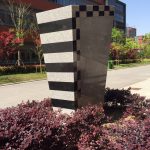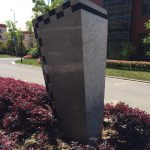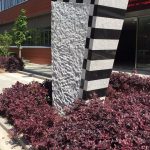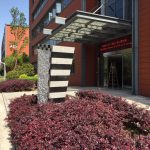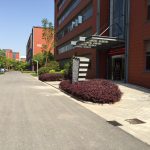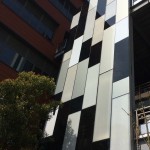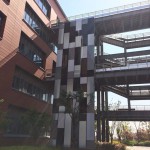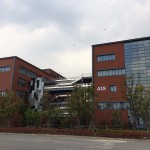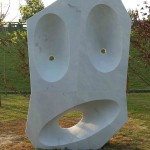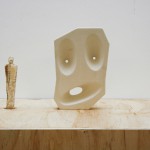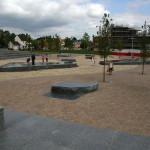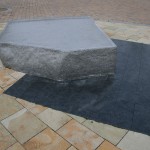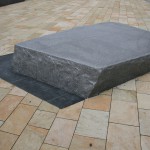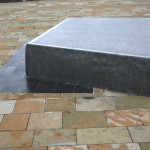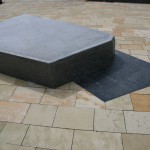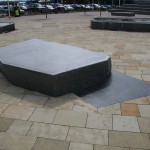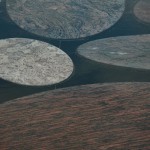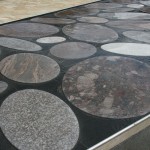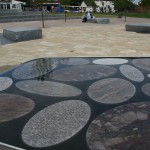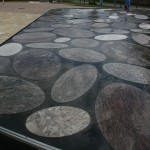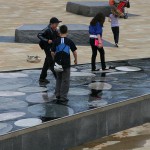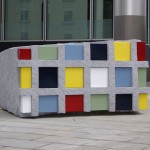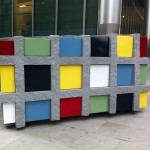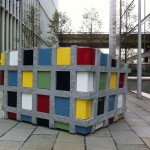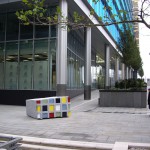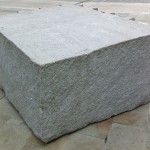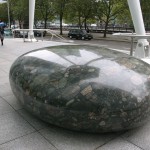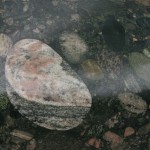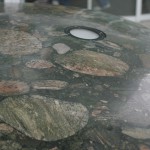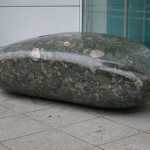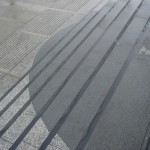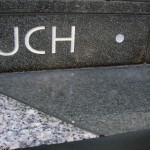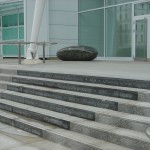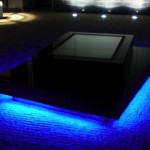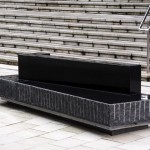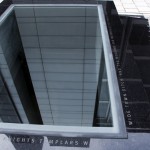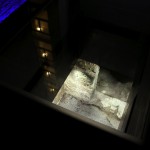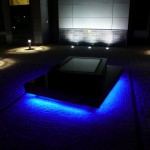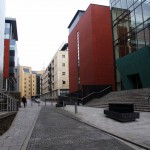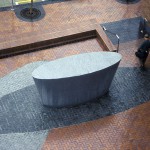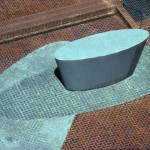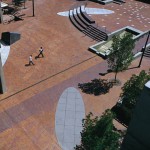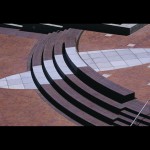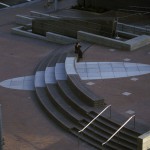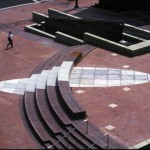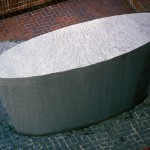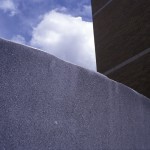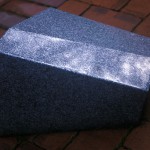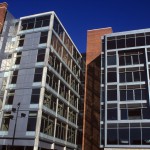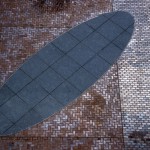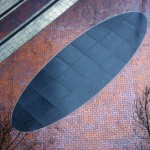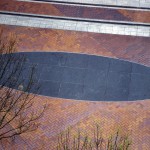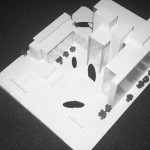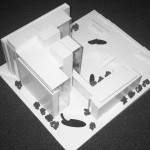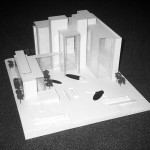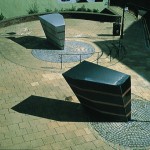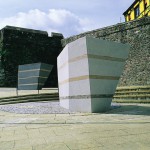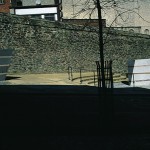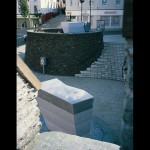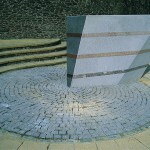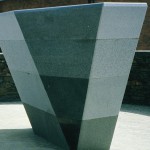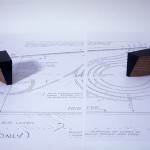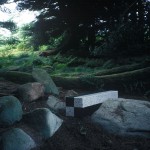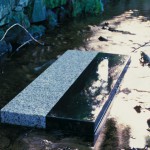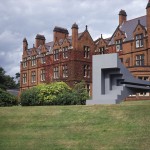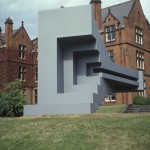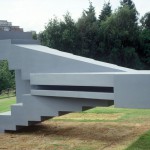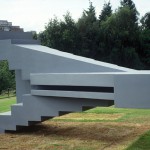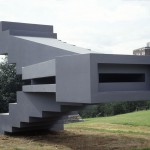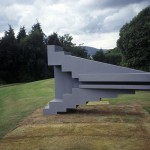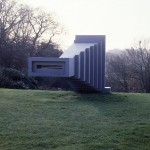Untitled
Haimen IST
People Republic of China
It is proposed to locate a small sculpture at the entrance to the administration block that will act as a ‘beacon’ to attract attention to entrance way from the main gate of the site.
This small sculpture will relate directly to a proposed larger scale work which will be located outside the AAB building at the Shaw Campus, therefore making a link between the University in Kowloon Tong and the IST in Haimen.
These works, specially the large scale glass walls, will create an unique and original identity for IST that will compliment the existing BU logo and signage, and draw attention to the BU site distinguishing it from other institutes that might be located in the Haimen Science and Technology Park.
Untitled
Haimen IST
People Republic of China
Major feature of the street elevation is the metal bridge structure that spans between the two buildings. I decided to use this as a supporting structure to position a large scale abstract ‘sign’ to draw attention to the site in a dynamic and unique manner.
Two monumental scale panels of different tones of glass, one located to the street side of the IST and the other to the courtyard side.
Untitled
Jiande, Zhejiang
People Republic of China
Untitled
Wednesfield
Wolverhampton
England
Major project for new public space in Wednesfield including two water features and five large sculptures, commissioned by Wolverhampton City Council with funding from the EU Urban Regeneration Programme.
Untitled
Paddington Central
London
UK
Two large sculptures in granite with coloured enamelled steel inserts commissioned by Development Securities for Paddington Central, London
Monolith and Shadow
UCLH Hospital
London
UK
Sculpture in granite for entrance to University College Hospital London funded by UCLH Charitable Trust and the Kings Fund
Temple Quay
Bristol
England
Commission for the Temple Quay area of Bristol is an extensive landscape based work, located within development of offices and HQ Buildings adjacent to Temple Meads Station and the Floating Harbour. The project, which was commissioned as part of SWRDA’s commitment to public art was funded by the Development Agency itself alongside contributions from Castlemore Securities, the developers for the overall site.
Sometimes excellent projects are pre-planned like a military operation and sometimes they come out of a confluence of difficult circumstances that eventually drive the outcome. This was certainly the case here. The issue was the future of a valuable but very vulnerable piece of archaeology on the development site. This was the former River Gate in the city’s historic Portwall, that separated the marshland from the trading centre of the medieval city.
Several metres below the current ground level and in rapidly deteriorating condition, this structure became the focus of heated debate about how best to treat it. One side wanted it open for all to see, while others felt it would rapidly crumble and it would be best for it to be recorded and recovered. The art programme came up with the answer. Geoff Wood who advised SWRDA on public art issues suggested that an artist be commissioned to develop a sculptural solution to both protect and reveal the River Gate. As a result, John Aiken, Director of the Slade School of Art, was appointed to develop a solution and came up with a means of interpreting the route of the historic PortWall as it passes through the site.
At key points along the route modular sculptures appear in polished black granite. Each subsequent sculpture accrues another piece until they become symmetrical benches underlit with blue neon. The last bench sits over a large, underground, illuminated and environmentally controlled room that houses and protects the Rivergate. The sculpture is enlarged and has a glazed viewing aperture through which the archaeology can be viewed. The complete artwork is over a hundred metres long and articulates the path between commercial buildings, whilst providing attractive informal seating for lunchtimes.
Untitled
Portland, Oregon
U.S.A.
Sculptures and lithographic prints for the interior of Urban Studies Center, Portland State University, Portland, Oregon
Portrait Of The City As Shape
New Gate Bastion, Derry
Northern Ireland
Four monumental sculptures at New Gate Bastion, historic site in Derry City centre, commissioned by the Department of the Environment NI, Arts Council Lottery and Derry City Council
Untitled
Tyrebagger Forest, Aberdeenshire
Scotland
Four sculptures in granite for Tyrebagger Forest, Aberdeenshire, commissioned by Forest Enterprise with Arts Council Lottery funding.
Nature and Culture
Yu-zi Paradise Sculpture Park
Guilin
People Republic of China
The sculpture I completed at the 4th Symposium is titled NATURE AND CULTURE, it is my response to the beautiful Guilin landscape and my interpretation for the intentions for YUZI Paradise. I see YUZI Paradise as a positive platform for a dynamic meeting between NATURE (the landscape) and CULTURE (the sculptures). My sculpture explores this relationship.
The sculpture when in position in Paradise rises from amongst a cluster of rocks set at the foot of a small mountain near pine trees and a shallow lake. It is made from granite and is constructed in a number of distinct stages which using a slightly different technical process.
The first stage is the natural block as cut in the quarry, it is roughly worked as it reaches towards the second stage. The next three stages are increasingly precisely worked and provide a horizontal platform for the final stage.
The horizontal platform allows two opposites top meet –a finely worked, precisely finished geometric shape (which abstracts yet echoes the shapes of the surrounding mountains) and a large boulder taken from the river, polished by the natural forces of time and the effect of water. The geometric simplicity contrasts strongly with the natural swirling carton of the boulder. It is important that the most refined element of the sculpture in physical form should be this naturally polished river stone.
The process of construction and acknowledgement of the various carving techniques used by the stone masons is also an important aspect of the work –it generates a sense of an going history.
I want the sculpture to be relevant to its site and have a strong sense of location. I want it to stimulate and reflect a debate about issues which arise when culture meets nature and nature influences culture.
link
-
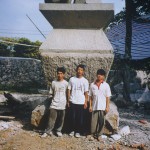
-
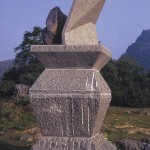
Looking Listening
Arts Council of Northern Ireland
(relocated to Stormont Hotel in 2010)
Ireland
Steel sculpture for headquarters of Arts Council of Northern Ireland, commissioned by the Arts Council of Northern Ireland (relocated to Stormont Hotel 2010)
